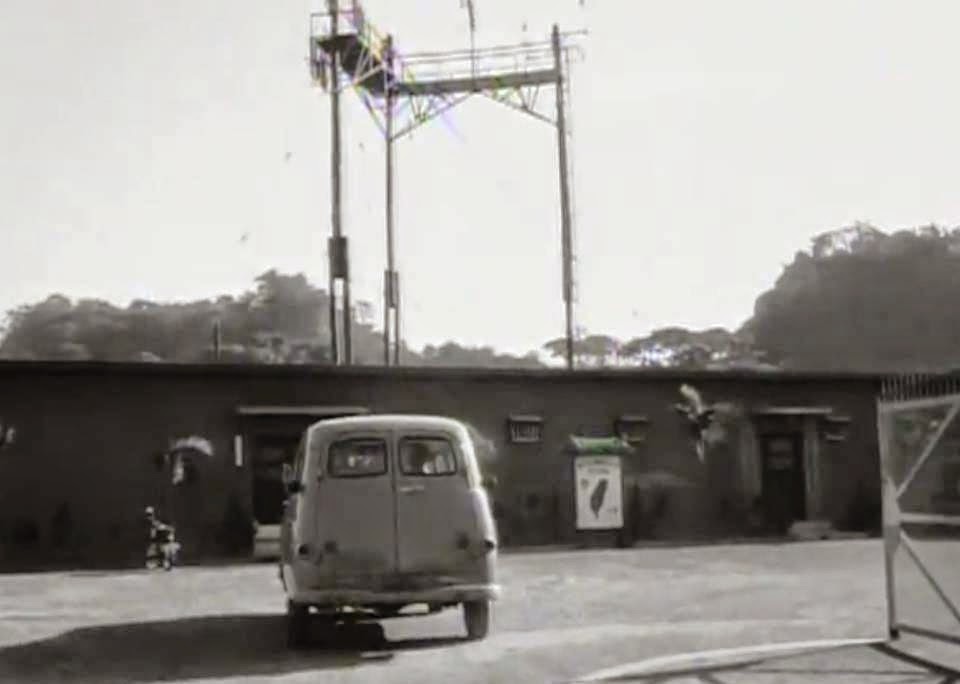One of the fortunate 16 who were picked to go to Taiwan was Marvin Faulkner.
Of the 16 assigned, 6 of us, including Marvin, were from Ohio. We all arrived in Fort Lewis, WA in late May of 1968 and flew to Tokyo for a night's stay. The next day, we touched down at Taipei International during a steady downpour.
We sat outside, wondering which side of the road they drove on. We were eventually transported to an enclosed area and stayed in the Navy barracks.
After a week of processing in, we took trucks and vans from the Signal Compound in Taipei to our barracks on Grass Mountain. From there it was off to the tape relay center.
A few months later, Marvin left us and wound up at the STRATCOM facility in Tsoying, near Kaohsiung. Along with him went a friend of mine from TTY repair.
Duty there was a constant 12-hour, 7 days a week grind. Facilities there were basic and time off was a rarity. The work site was understaffed, but the soldiers who manned the work area were quite competent.
Still, Marvin met people and made friends from Tsoying and Kaohsiung. Here are some pictures he sent.
Photo courtesy of Marvin Faulkner
Approaching the tower at Tsoying, this photo simply replaces the original.
Photo courtesy of Scott Ellinger
In the early 1960s, the site at Tsoying was very similar looking as the picture below.
Photo courtesy of Marvin Faulkner
This appears to be the inside of the Tsoying USASTRATCOM communications complex.
Photo courtesy of Marvin Faulkner
This is either the entrance to, or exit from the Tsoying site.
 |
Here's Marvin with the Taiwan Strait in the background.
|
 |
Sitting atop a WWII Japanese gun emplacement is a friend and Marvin. The friend's name is unknown.
|
 |
This is a view of the front entrance to the Japanese gun emplacement. |
 |
From inside the fortified bunker, this would have been the panorama the Japanese had during WWII.
|
 |
Home away from work was this hostel in Tsoying.
|
 |
American soldiers lived in this hostel until they were bumped out by ROC Navy officers on TDY.
For the GIs, it was off to a hotel in Kaohsiung.
|
 |
This was a nifty shortcut from the hostel to work, the bowling alley, and other places of interest. |
 |
Back for a visit in 1998, Marvin found his old hostel still standing.
|
 |
The First Hotel in downtown Kaohsiung became home for the displaced U.S. servicemen.
|
 |
Here's a street view of the First Hotel. At this time, pedicabs were still legal. They were phased out beginning July of 1969.
|
 |
Small, but sufficient, the hotel's rooms were nicely furnished.
|
 |
Big enough for a guest or two |
The business card---Taiwan's life blood
|
 |
This shot was taken in 1968 from a window in the hotel, several stories up. Kaohsiung looks less hectic than Taipei. |
 |
This would be a photo taken about 30 years later than the previous picture. The position of the camera appears to be the same, but Kaohsiung had surely changed.
|
 |
And here is Marvin at the front entrance of the First Hotel in 1998.
|
 |
Another hotel's card |
 |
The hotel's prices and location |
 |
This site near Kaohsiung looks like a relay center. To the left appears to be a microwave tower. |
 |
This looks to be part of the site in the previous picture. |
 |
I wonder if these signals went to and came from the Seven Star microwave site, the lead picture for this blog. |
 |
Kaohsiung harbor as it appeared in the 1960s. A lot of physical loading and unloading was involved. |





Great post John. Lots went on in Kaohsiung during our time and so few of the men who worked down there have checked-in. Thanks to Marvin, we can finally see some of the old facilities and how we lived during those years.
ReplyDelete